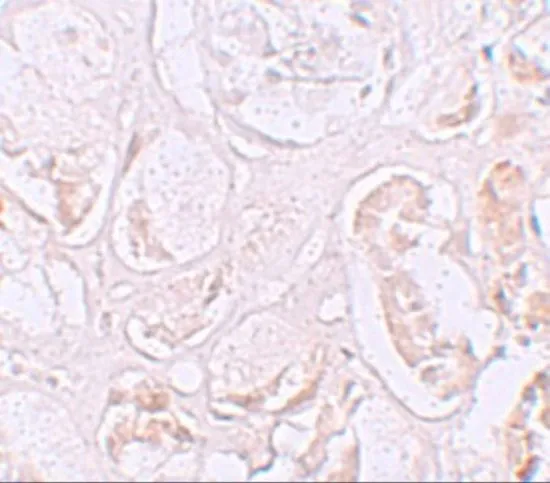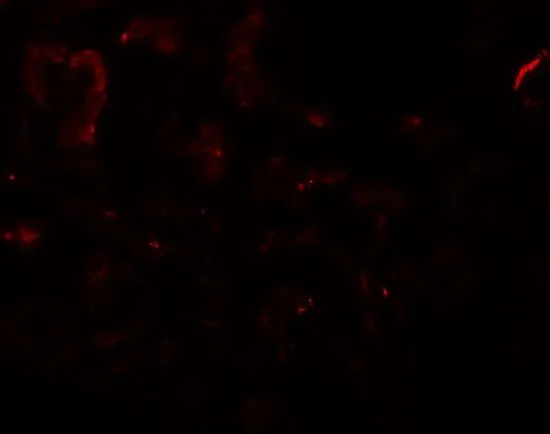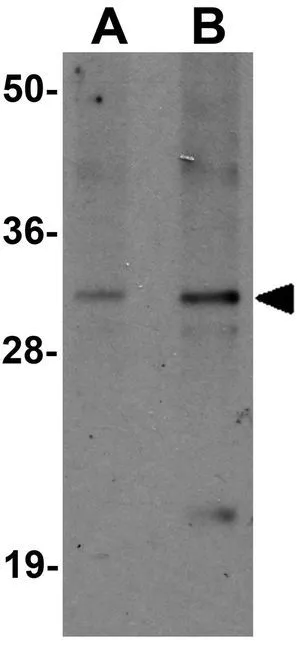
IHC-P analysis of human kidney tissue using GTX31427 SLAMF9 antibody. Working concentration : 2.5 microg/ml
SLAMF9 antibody
GTX31427
ApplicationsWestern Blot, ELISA, ImmunoHistoChemistry, ImmunoHistoChemistry Paraffin
Product group Antibodies
ReactivityHuman, Mouse, Rat
TargetSLAMF9
Overview
- SupplierGeneTex
- Product NameSLAMF9 antibody
- Delivery Days Customer9
- Antibody SpecificitySLAMF9 antibody is predicted to not cross-react with other SLAM protein family members.
- Application Supplier NoteWB: 1 - 2 microg/mL. IHC-P: 2.5 microg/mL. *Optimal dilutions/concentrations should be determined by the researcher.Not tested in other applications.
- ApplicationsWestern Blot, ELISA, ImmunoHistoChemistry, ImmunoHistoChemistry Paraffin
- CertificationResearch Use Only
- ClonalityPolyclonal
- Concentration1 mg/ml
- ConjugateUnconjugated
- Gene ID89886
- Target nameSLAMF9
- Target descriptionSLAM family member 9
- Target synonymsCD2 family member 10; CD2F10; CD2F-10; CD84 homolog 1; CD84H1; CD84-H1; cluster of differentiation 2 antigen family member 10; cluster of differentiation 84 homolog 1; SF2001; signaling lymphocytic activation molecule family member 2001; signaling lymphocytic activation molecule family member 9; SLAM family member 9
- HostRabbit
- IsotypeIgG
- Protein IDQ96A28
- Protein NameSLAM family member 9
- Scientific DescriptionThis gene encodes a member of the signaling lymphocytic activation molecule family. The encoded protein is a cell surface molecule that consists of two extracellular immunoglobulin domains, a transmembrane domain and a short cytoplasmic tail that lacks the signal transduction motifs found in other family members. Alternative splicing results in multiple transcript variants.[provided by RefSeq, Apr 2009]
- ReactivityHuman, Mouse, Rat
- Storage Instruction-20°C or -80°C,2°C to 8°C
- UNSPSC12352203


